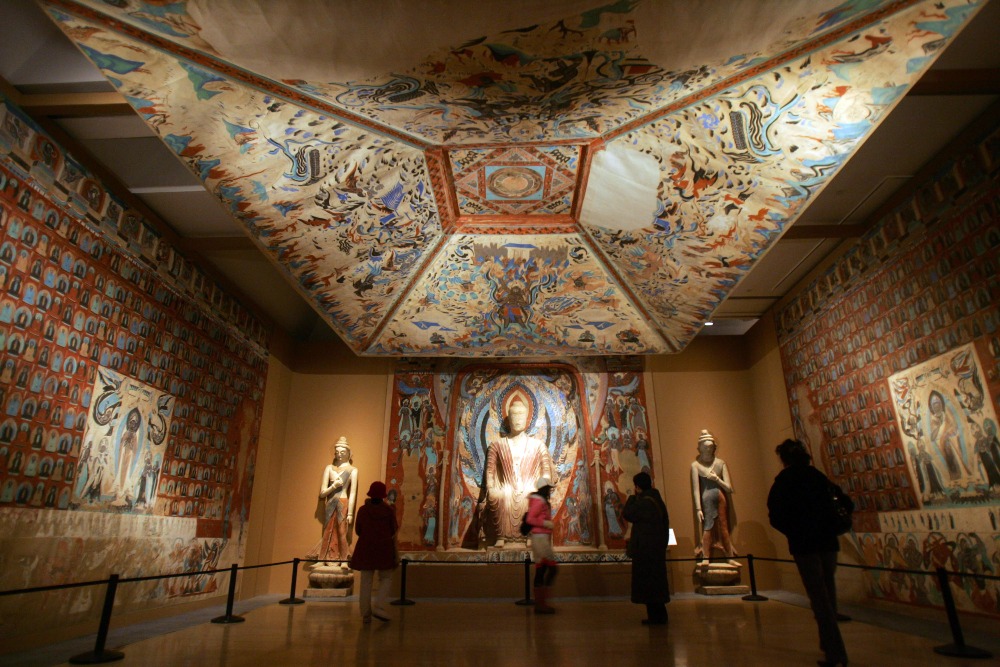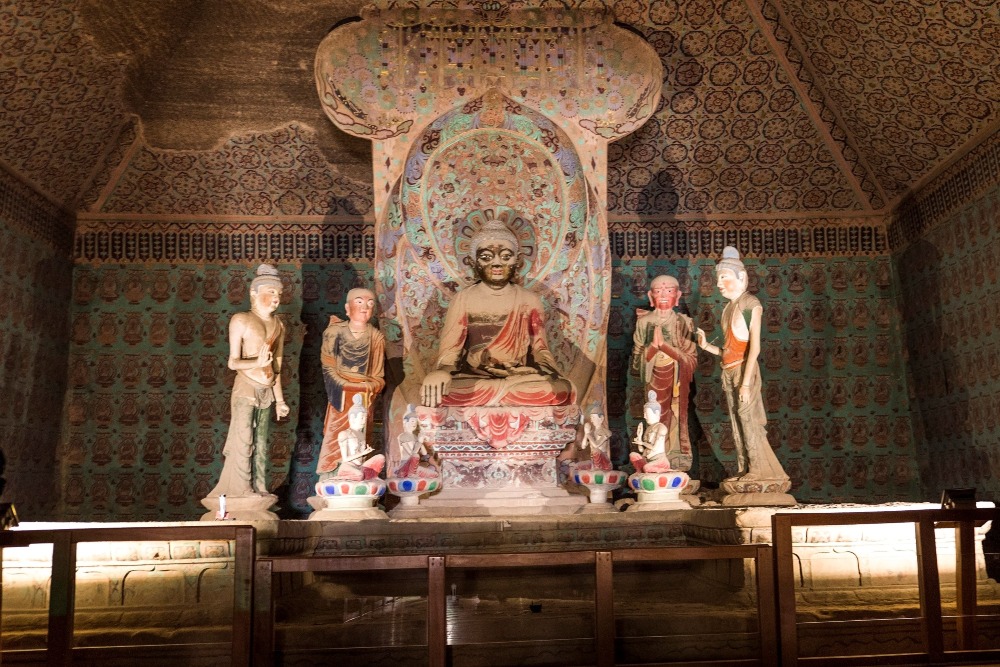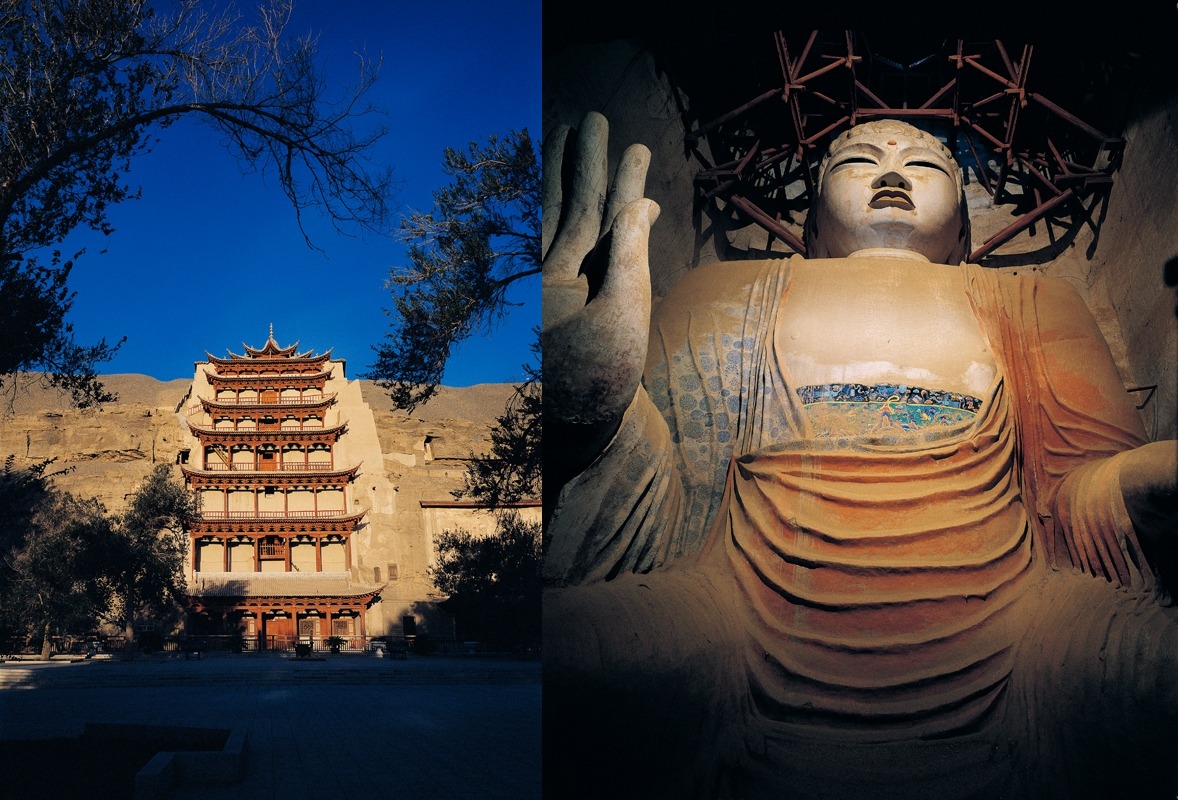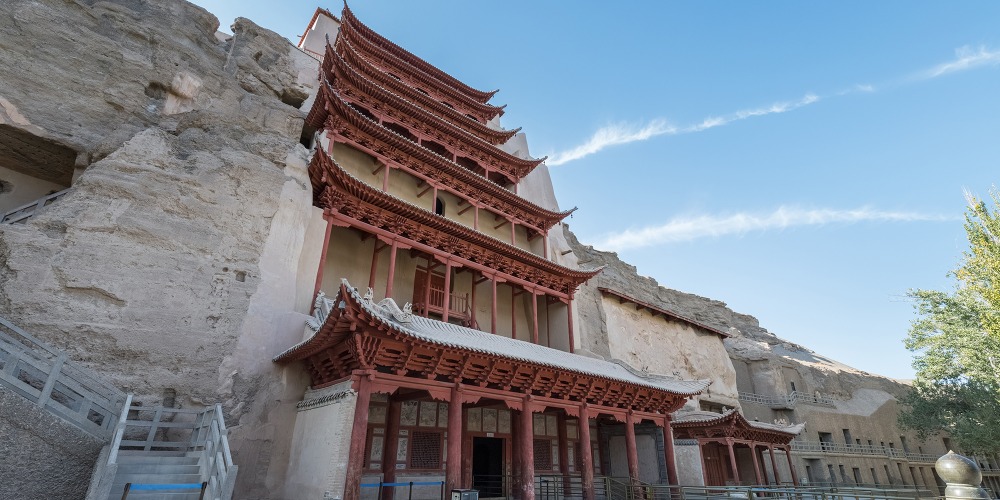Published : 2023-10-29
The Mogao Caves of Dunhuang, built over thousands of years, are the largest existing treasury of Buddhist art in the world, lauded as a treasure of human civilization.
The Mogao Caves, also known as the "Cave of the Thousand Buddhas," currently houses 735 caves, each unique in size, shape, and theme. Scholars have classified them into 9 different architectural forms, each having their own special features.
The making of the Mogao Caves spans over 1500 years
Located on the Mingsha Mountain in Dunhuang, the Mogao Caves stretch over 1,600 metres, housing 735 existing caves.
The largest of which reaches over 40 metres high and the smallest stands less than half a metre tall. The caves were carved through ten dynasties, spanning 1,500 years.

Caves from different eras have their unique "characteristics of the times".
Contemporary scholars categorise them into 9 forms based on archaeology: central pillar caves, truncated pyramid caves, hall caves, monumental statue caves, nirvana caves, meditation (zen) caves, monks' caves, image caves, and burial caves.
What is the most common cave form in the Mogao Caves?
The central pillar caves are named after the square pillar in the centre of the cave, influenced by the Indian Chaitya hall style.
Most caves from the Northern Dynasties followed this design, such as Cave 254, 248, and 428.

Truncated pyramid caves are the prevalent cave form in the Dunhuang grottoes, named for the truncated pyramid shaped ceiling in the caves.
Their influences can be traced back to Chinese Han tomb designs. Notable examples of these can be found in Cave 249 (Western Wei Dynasty), 328 (Tang Dynasty), and 159 (Mid-late Tang Dynasty).

Hall caves are similar to the truncated pyramid caves, with the difference of having an altar and statues in the centre for worshiping Buddha.
Some of these caves even have a backdrop wall up to the ceiling of the cave. Most of these caves are large-scale, built for devotees to worship Buddha, dating back to the late Tang and the Five Dynasties.
Examples of this cave type include Cave 16 (late Tang Dynasty), Cave 85 (late Tang Dynasty), Cave 98 (Five Dynasties), and Cave 61 (Yuan Dynasty).

Iconic Mogao architecture - the Nine Story Building and the Cave of Precious Scriptures
The monumental statue caves are known for Buddha statues larger than human size, such as Cave 96 (Early Tang Dynasty) and Cave 130 (Flourishing Tang period).
The signature facade of Mogao, "The Nine Story Building", is part of the exterior building of Cave 96.

The Nirvana Caves have an arched ceiling and a rectangular shape, and are called such because they contain images of Buddha's Nirvana.
Typical caves are Cave 148 (Flourishing Tang period) and Cave 158 (Middle Tang period).

The Zen Caves and Monks' Caves are small caves used by monks for Zen meditation, worshipping, and daily life activities.

The Image caves are built in memory of high ranking monks, with Cave 17 (Late Tang Dynasty) being the most notable.
Also known as the "Library Cave", it has yielded about 60,000 Buddhist scrolls, social documents, embroideries, silk paintings, and other cultural relics, which are unfortunately now scattered all over the world.
Burial caves were used for burial purposes, mostly found in the northern area of the Mogao Caves.

Among these 700+ Mogao Caves, there are about 45,000 square meters of preserved murals, over 2,400 coloured statues, and over 4,000 flying apsaras statues.
They record different religious beliefs, rituals, and aesthetic standards of art across different eras.
They also bear testament to the fusion of traditional Chinese architectural culture and foreign art, giving rise to a new international discipline called "Dunhuang Studies".
Read more: How are digital technologies "reconstructing" the Mogao Caves?








